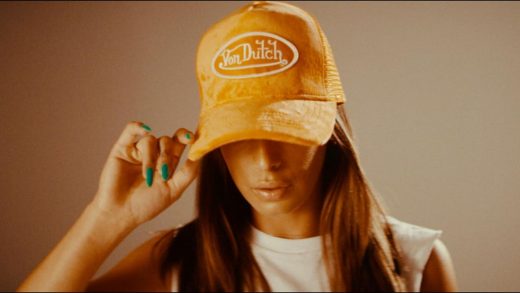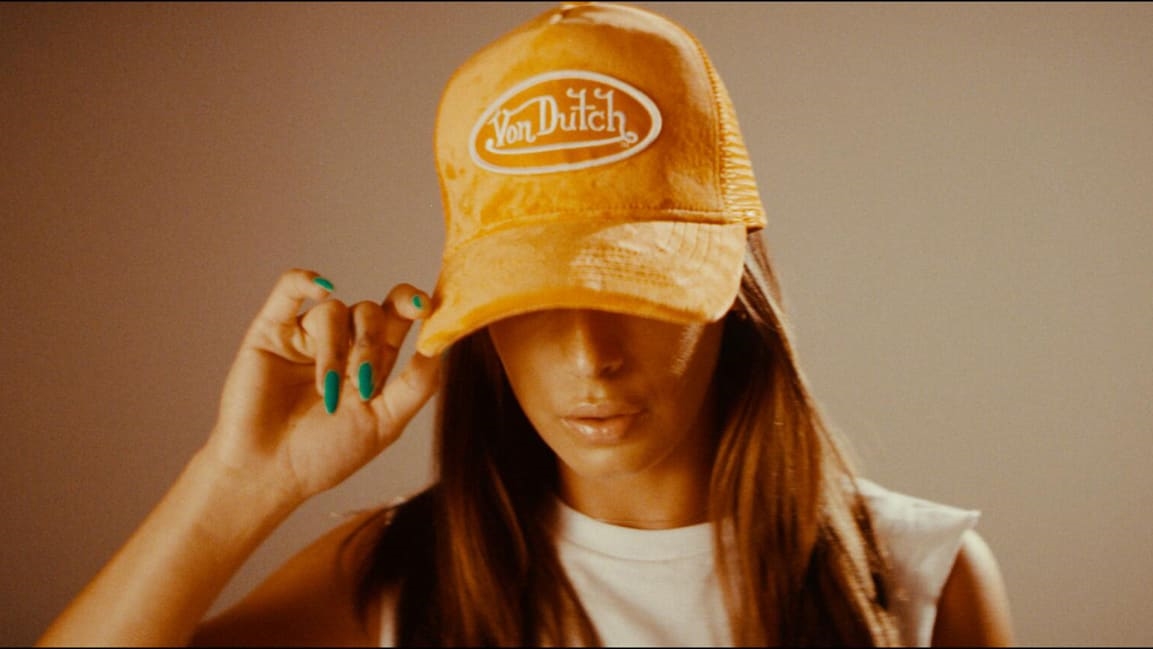Hold on to your trucker hat, here comes aughts nostalgia
It was the best of times, it was the Durst of times: the era of click wheels and Sidekicks; MySpace Tom and TomTom GPS; the moment that digital camera prices fell lower than low-rise jeans, and the number of VH1 shows starring Flavor Flav rose higher than the spiky frosted tips on Ryan Cabrera. Of all the detritus to emerge from the cultural wasteland at the turn of the millennium, however, perhaps nothing is more iconically aughts than the Von Dutch hat.
The mesh-sided snapback trucker hat was the most efficient way to align yourself with the moment in 2003. It marked the triumphant return of irony, post-9/11: Members of the leisure class paying anywhere from $42 to $129 hilarious dollars to wear part of a laborer’s unofficial uniform, often at a functionless 45-degree tilt for extra Now points. The garment was so ubiquitous (and flamed out so quickly) that it became forever enshrined as sartorial shorthand for its time period, the same way JNCO jeans did for the grunge era. If Hulu’s new documentary, The Curse of Von Dutch, seems designed to elicit nostalgia for that era, though, it’s perfectly in keeping with a moment when everyone seems to be looking back at—or reckoning with—the aughts.
Unnecessarily divided into three episodes, The Curse of Von Dutch: A Brand to Die For, which premieres today, is about the origin, rise, and fall of the once-coveted fashion brand. Although viewers will have to be deeply interested in intracompany intrigue to stay engaged throughout the whole affair, it’s still an eye-opening Segway ride down memory lane. A major early chapter of Von Dutch history takes place at Tommy Lee’s house while filming an episode of MTV’s Cribs, for instance, which may be the most Y2K sentence anyone has ever written.
The best moment of the doc is perhaps its most revealing. In contemporary footage, Whitney Houston absently sings “I’m Every Woman” to herself as she and a 30-person entourage browse the Von Dutch store on Melrose Avenue in Los Angeles for a gratis VIP shopping spree. It’s a sweetly endearing moment for the singer, but also a reminder of how much the celeb publicity machine has evolved in the past two decades.
The average person was a bit more shielded from the business of celebrity in the pre-social media era, and may not have understood that the reason so many white-hot stars at the time were suddenly rocking Von Dutch in the pages of US Weekly was because the brand was giving away as much product as any celeb who stopped by the store was willing to take. Could the allure of celebrity affinity saturation back then work on the more dubious consumer of today? Von Dutch appears to have tried the same strategy recently with stars like Megan Thee Stallion and Saweetie, and judging from the lack of trucker hats on the streets at this moment, very few people went for it.
Still, plenty of other artifacts from the Von Dutch era have come roaring back two decades later—including wired headphones, apparently. Featured heavily in the doc is Paris Hilton, who is suddenly everywhere again, for the first time in ages. Her song, “Stars Are Blind,” one of those tunes so often cited as underrated that it might have become overrated, was featured prominently in 2021 Oscar nominee Promising Young Woman. Over the summer, Hilton debuted a cooking show on Netflix, and she has another reality show on Peacock about getting married.
Other relics from the era of television that spawned Hilton’s Von Dutch-flecked series The Simple Life are everywhere as well. The Sopranos has returned, in the form of its little-loved prequel movie, a possible upcoming prequel series, and a Generation Z veneration. Sex and the City is also back, with the Samantha-less And Just Like That due next month on HBO Max. Even justly forgotten projects like the reality series Joe Millionaire are getting a second life, with executives banking on an abundance of “Hey, I remember that” views.
On the music front, aughts legacy bands like the Strokes are still commanding attention after all these years, and 2022’s Just Like Heaven Fest offers a return of Pitchfork’s hottest bands of 2005—from the Shins to the Go! Team to Santigold. Blink-182 alum Travis Barker has become an in-demand producer, and half of one of the most oft-photographed celebrity couples of 2021. But music is also probably the area in which the most meaningful aspect of revisiting the aughts has emerged.
The New York Times TV production wing has bookended the year with two reclamation projects for women musicians who were treated horribly in the aughts. First came Framing Britney Spears, a shocking documentary about the singer’s questionable conservatorship that seems to have jump-started the process that ultimately freed Spears from its grasp just last week. On Friday, The New York Times Presents series unveils its next documentary, Malfunction: The Dressing Down of Janet Jackson, a look back at the Super Bowl scandal that hobbled the superstar’s decades-spanning career.
What both projects have in common is a full unpacking of the era that reveals how thoroughly institutional misogyny had polluted the cultural airstream at the time. Seems like the “Leave Britney Alone” kid was right all along.
hard to think of a more deeply vindicated historical figure pic.twitter.com/kb2rHqEypr
— David Parsons (@davidlparsons) November 3, 2021
It’s probably not a coincidence that in the same year as these documentaries, Hilton made her own mini-reclamation project by revealing that the ‘Stop Being Poor’ shirt she once supposedly wore was actually a Photoshop hit job. Who knows how many people formed a forever-idea of the heiress as sneering cartoon villain from that image?
The rising fixation on aughts nostalgia (aughtstalgia?) might be less about looking back longingly than about understanding how the mistakes of a previous era have informed our current one. If we arm ourselves with enough forensic findings, perhaps we can move forward with grace and vigilance, so that by the time the Trump era slides into nostalgia eligibility, we will have no use for a documentary on its most defining fashion accessory: the MAGA hat.
Fast Company , Read Full Story
(41)



